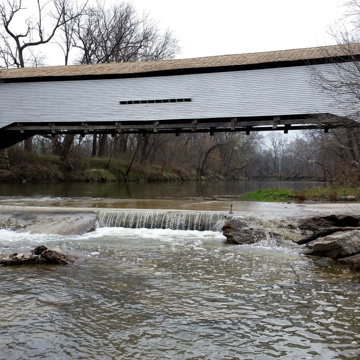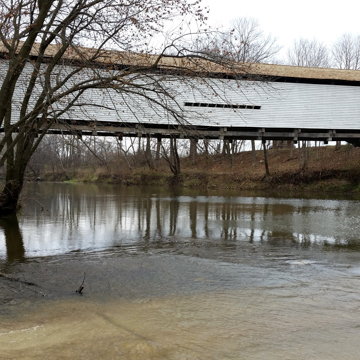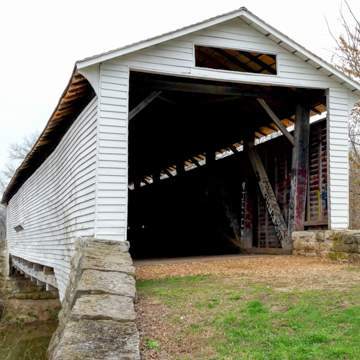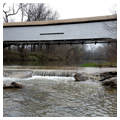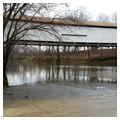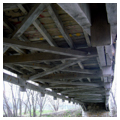The Union Covered Bridge, one of four remaining covered bridges in Missouri, replaced an older uncovered bridge where the road between Paris and Fayette crossed the Elk Fork of the Salt River. Covering a bridge prevented moisture from attacking the joints where expensive timber beams intersected. The clerestory-like opening immediately under the eaves on this bridge's long sides increases air circulation and helps to keep the braced arches of quarter-sawn oak dry. Elliott sheathed the bridge in narrow clapboard rather than the more common vertical board, which expels moisture better and also emphasizes the bridge's impressive span of 120 feet. The extended clapboard on both sides below the road deck helps protect the bridge's substructure from the elements. This is one of five bridges that Elliott built across the Salt River in Monroe County using the Burr arch truss, a system of great structural strength. Elliott set the beams and timbers against stone abutments, and each side of the bridge is composed of double arches whose timbers were shaped to the required curvature with an adze (its blade marks are visible) and held together with wooden pegs.
You are here
Union Covered Bridge
1871, Joseph C. Elliott. State Spur C, 9 miles southwest of Paris
Coordinator:
Osmund Overby, Carol Grove, and Cole Woodcox
If SAH Archipedia has been useful to you, please consider supporting it.
SAH Archipedia tells the story of the United States through its buildings, landscapes, and cities. This freely available resource empowers the public with authoritative knowledge that deepens their understanding and appreciation of the built environment. But the Society of Architectural Historians, which created SAH Archipedia with University of Virginia Press, needs your support to maintain the high-caliber research, writing, photography, cartography, editing, design, and programming that make SAH Archipedia a trusted online resource available to all who value the history of place, heritage tourism, and learning.





